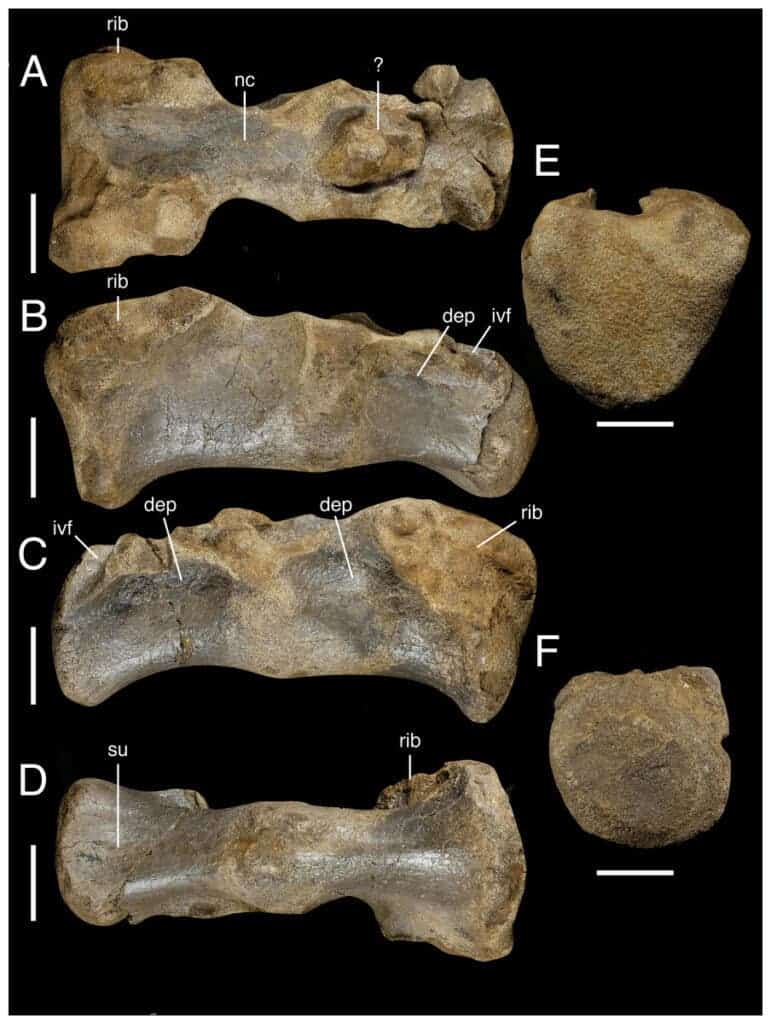The remains of what is likely the largest predatory dinosaur to ever be discovered in Europe have been unearthed on the Isle of Wight.

Compton Bay, in the southwest of the Isle of Wight, is a pretty unassuming place, despite its serene beauty. The most stand-out of its features are the chalk cliffs that line the bay and the cries of gulls flying overhead. And in such a place, a few boulders tumbling off the cliff face seem, in turn, just as unassuming.
But those lumps of rock held an incredible find: the fossilized vertebrae, pelvis fragments, and a limb bone from what is the largest predator ever found in Europe.
Big boy
“From the bones that we’ve got, this animal may be the largest predatory dinosaur that has ever been found in Europe,” said Dr Neil Gostling, a palaeobiologist at the University of Southampton. “It’s straight out of Compton.”
The fossils were identified as belonging to a spinosaur, a massive, two-legged beast that roughly resembled a dinosaur and lived 125 million years ago. Based on the size of the fossils, the archeologists that describe the finding believe the animal measured over 10 meters from snout to tail.
According to Chris Barker, the Ph.D. student who led the study, these measurements point to a “huge” spinosaur. Whether it was just one very large specimen of an already-described species or a member of an entirely new species, however, will have to remain a mystery for now. Too little of it has been recovered for us to be able to determine its species. The remains are on display in the Dinosaur Isle museum in Sandown.


Although dinosaurs were land-based animals, spinosaurus spent a large part of their time in or close to the water and relied heavily on fish in their diet. But knowing their dietary preferences doesn’t mean we know how they got their food: whether spinosaurus was a hunter or scavenger is still unclear.
The dinosaur family that includes spinosaurus emerged in Europe around 150 million years ago and later spread across much of the world. The discovery of these fossils, says paleontologist Darren Naish, co-author of the study, reinforces this hypothesis of the spinosaurs’ evolutionary history.
“It’s a shame it’s only known from a small amount of material, but these are enough to show it was an immense creature,” Barker said.
“We hope that additional remains will turn up in time,” says Naish. “Because it’s only known from fragments at the moment, we haven’t given it a formal scientific name.”
Despite the limited amount of material discovered at the site, the team was able to glean some information regarding the fate that this dinosaur was met with. Marks on the fossilized bones suggest that the animal died of natural causes but was set upon by scavengers after its death. Finger-sized tunnels bored through the pelvic bone fragment suggest that the bone-eating larvae of scavenging beetles had feasted on the spinosaurus, probably among several other species.
The paper “A European giant: a large spinosaurid (Dinosauria: Theropoda) from the Vectis Formation (Wealden Group, Early Cretaceous), UK” has been published in the journal PeerJ Life and Environment.


